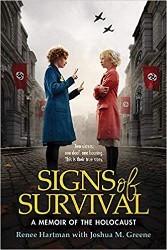Many readers may not be familiar with the story of Nicholas Winton (1909−2015). Born into a Jewish family in Britain — although his parents converted to Christianity — Winton became a persistent advocate for Jewish children trapped in Prague by the Nazis. After World War II ended, Winton returned to quiet anonymity, preferring not to publicize his heroic actions, which were brought to light later by some of those whom he had rescued. World-acclaimed artist and illustrator Peter Sís make’s Winton’s story accessible to young readers, with careful explanations and images glowing with the combination of fact and fantasy which characterize his work. The result is an astoundingly beautiful tribute to one brave individual, as well as to the ideals of selflessness and courage in the face of tyranny.
One of the important aspects of Sís’s approach is his seamless combination of artistic sophistication and effective communication to children. Winton first appears as a young boy attending school, drawn to the everyday pursuits of “mathematics, stamp collecting, photography, and fencing.” Even if most readers will not recognize fencing as a typical hobby, the picture of young Winton dressed in pretend armor while riding a fantastic bird evokes every child’s imaginative play, as well as foreshadowing the Don Quixote-like commitment which Winton will embody later in life.
Sís is an expert at depicting the role of place in history. Here there are maps of Europe adorned with figures which personalize events, given further context by text: “Nicky and his friends talked about politics…In Germany, the Nazi Party, led by Adolf Hitler, was building an army.” Rather than emphasizing the looming terror in words, Sís focuses on the concrete detail of growing military strength, picturing the sense of fear as a gray shadow, with a featureless figure raising his hand in the Nazi salute, looming over the map. Other locations are not literal maps, but visual images of imaginative landscapes. The titular Vera Gissing is a ten-year-old Jewish girl in Czechoslovakia who, along with many others, will be rescued by Winton on a transport to England. Sís presents Vera’s own vision of her small town near Prague as a secure enclosure surrounded by small and delicate buildings. Inside the circle, vendors sell food, a band plays in the center, and a parade of cats follows a young girl. This is a child’s perception of community and it is about to be shattered by world events.
Everywhere, Sís explores the impact of history on individuals. He draws the German invasion of Vera’s country as a series of collisions between separate and previously secure worlds. A twisting line of refugees passes Vera’s circular town and the cellar of her house, where “there was suddenly extra food and clothing, ‘just in case.’” In the lower-right corner of the scene, a family celebrates Hanukkah, indicated by a menorah in the center of a table, while the fleeing residents exit through the walls of the city. Readers who look carefully will find many small visual details embedded in this poignant scene.
As Winton involves himself in an orderly attempt to rescue as many Jews as possible, Sís’s pictures become more documentary, blue and gray scenes of his hard work organizing papers and convincing bureaucrats to support his efforts. Yet at the same time, a picture of the young armor-clad Nicky Winton reminds readers that the imaginative boy has become a dedicated leader who has not forgotten the dreams of his childhood. Vera leaves her family behind, one of seventy-six children brought to safety in England in the first of several transports. The frightened children sit apart from one another on the train, each isolated in his fear, although a stylized cat with its back to the reader entertains them by narrating their own pasts: “So they told stories about the lives they left behind.”
Sís does not avoid tragedy; when Vera visits her home after the war, the circles previously humming with activity are empty and silent. Her family gone, Vera “only found the daughter of one of her old cats.” There is deep sadness and she returns to Britain, captured in the comforting image of a double-decker London bus and red telephone booth. Most importantly, life continues: “She got married and had a family.” Winton, too, resumes his life before the war, eventually receiving accolades for his unselfish heroism. Sís’s book is an incomparable homage both to Winton’s life and to the power of picture book art in communicating with children.
The book includes an informative “Author’s Note” with background information.
Emily Schneider writes about literature, feminism, and culture for Tablet, The Forward, The Horn Book, and other publications, and writes about children’s books on her blog. She has a Ph.D. in Romance Languages and Literatures.




